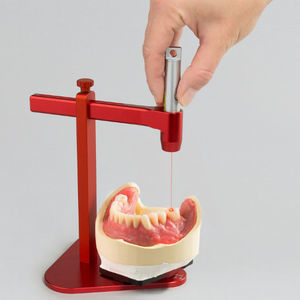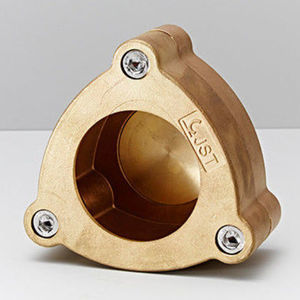
Non-arcon dental articulator CA 3.0with magnetic mounting system

Add to favorites
Compare this product
Characteristics
- Type
- non-arcon
- Other characteristics
- with magnetic mounting system
Description
The Articulator CA 3.0 excels through its simple handling and precision. It was designed along the camper plane. It runs parallel to the occlusion plane, thus giving unambiguous and practical reference for daily work.
The temporomandibular joint – an overview
The temporomandibular joint is both a rotating and sliding joint with two types of movement: the rotation or hinged axis as well as the translational or sliding movement. The most common form of movement is a combination of both types of movement. A rotation with simultaneous translation – a rotary sliding. Interaction between the two temporomandibular joints allows rotational movement along axes other than the hinged axis. Three axes of movement can be determined.
A horizontal-transversal joint axis as simple hinged axis (green).
A vertical joint axis for the respective condyle on the side of lateral movement (blue). The condyle on the opposite side performs a downward and sliding movement forwards.
A horizontal-sagittal joint axis (black) for the respective condyle on the side of lateral movement, with simultaneous lateral movement of the joint head of the opposite side downwards and forwards.
The CA 3.0 joint is analog to the natural temporomandibular joint
The shape of the natural joint head is copied and simulated by the double cone in the Articulator CA 3.0. This avoids unphysiological, straight movement patterns in lateral and transverse motion sequences.
Simulating natural movement
The CA 3.0 is equipped with two guide edges which guide the double cone.
A vertical-sagittal one on the retrusion bar (red) and a horizontal-sagittal one on the joint disk (green).
VIDEO
Catalogs
Related Searches
- Dental material
- Restoration dental material
- PMMA dental material
- Dental prosthesis dental material
- Modeling dental material
- Biocompatible dental material
- Wax dental material
- Dental laboratory dental material
- Impression tray dental material
- Orthodontic material
- Opaque dental material
- Liquid dental material
- White dental material
- Transparent dental material
- Powder dental material
- Posterior teeth dental material
- Denture making dental material
- Dental articulator
- Gingival dental material
- Dental calipers
*Prices are pre-tax. They exclude delivery charges and customs duties and do not include additional charges for installation or activation options. Prices are indicative only and may vary by country, with changes to the cost of raw materials and exchange rates.







